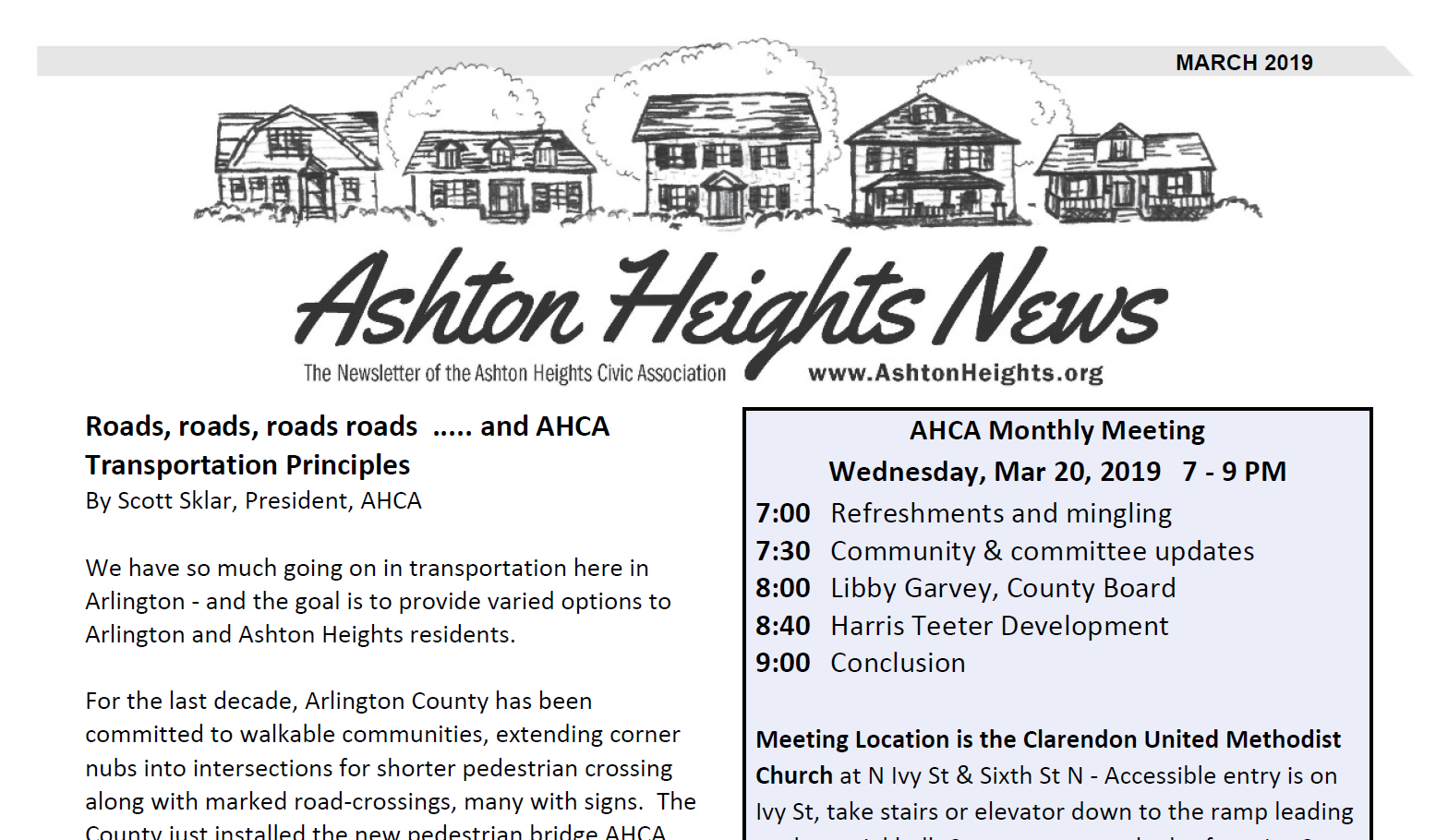Ashton Heights Civic Association Meeting Minutes for 9/18/2019
Ashton Heights Civic Association Meeting Minutes 09/18/2019Scott Sklar, AHCA President, brought meeting to order at 7:30 pm. Scott mentioned that this is going to be his 8th and final term as President. For the next year, Julia Tanner will be shadowing him and his duties, so she can step in as President at the end of… Continue reading Ashton Heights Civic Association Meeting Minutes for 9/18/2019

